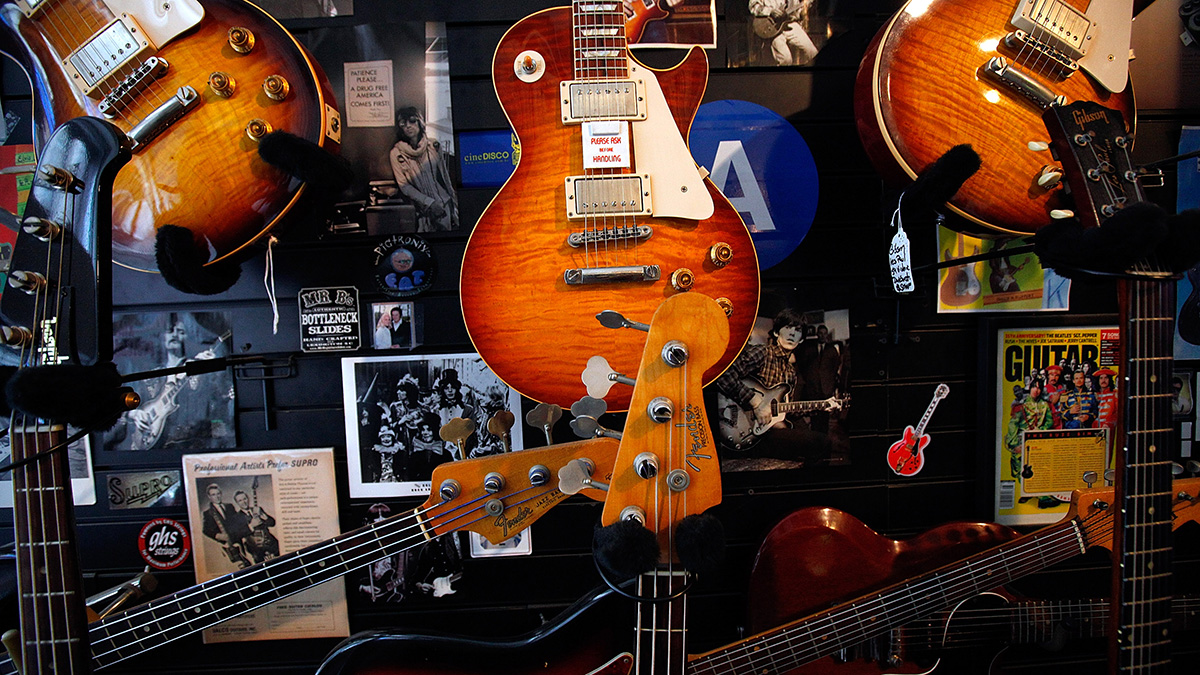Nile’s Karl Sanders: “If you took all the guitars out of Saurian Apocalypse, it would be an ambient/meditative record. But I like playing guitar, so there’s guitars”
Sanders returns with his first solo album in 13 years, and it is a haunting and hypnotic companion piece to Nile’s tech-death cacophony, featuring the genius of Rusty Cooley on acoustic
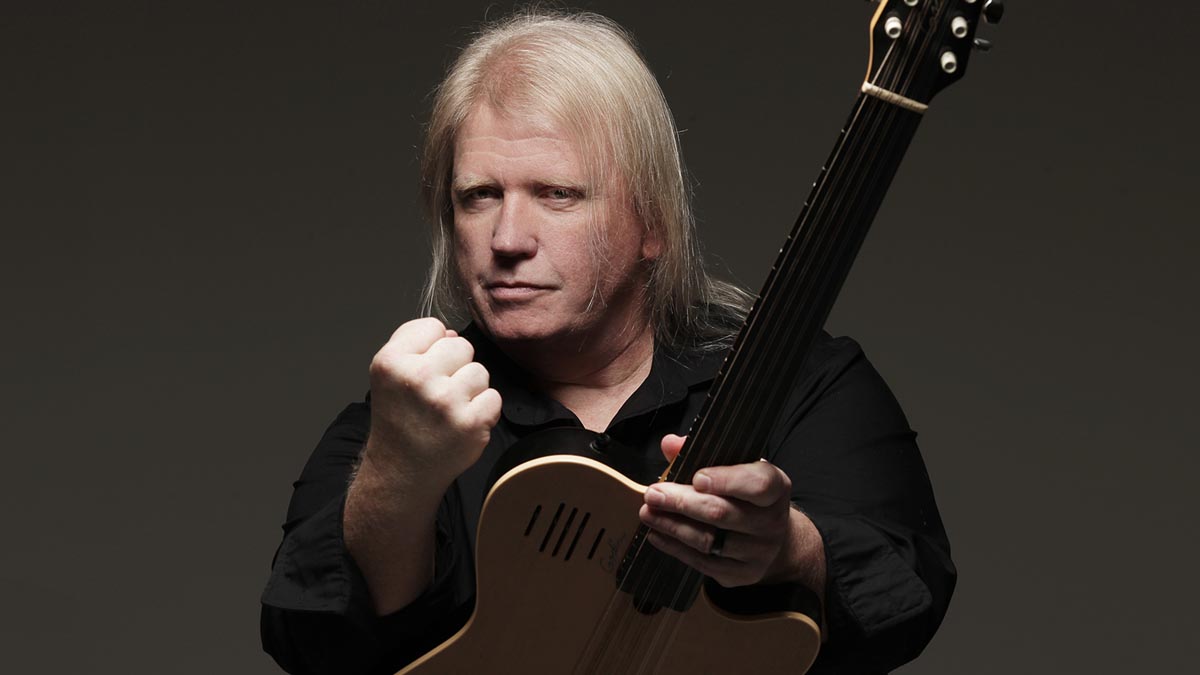
Nile were among the first bands to successful merge Middle Eastern sounds with extreme metal. Led by guitarist/vocalist/multi-instrumentalist Karl Sanders, the South Carolina death metal stalwarts incorporate Egyptology into their approach, as evidenced by the album titles as At the Gate of Sethu and such song titles as "Defiling the Gates of Ishtar" – and, most obviously, taking their name after the River Nile.
This pioneering sound allowed them to push new limits of technicality in death metal, to expand the art form’s musical vocabulary, lending its sonic extremity a mythological heft that felt rooted in something ancient, something fundamental to the human condition, something terrifying.
Today, July 22, Sanders returns with his third solo album, Saurian Apocalypse, his first since 2009’s Saurian Exorcisms, and it is an album that sees him mostly forgoing his typical arsenal of Dean electric guitars and the blast beats of Nile, in favor of acoustic instrumentation such as the Turkish lute and hybrid acoustic electric instruments such as Godin’s A11 Glissentar.
It allows him to tunnel deeper into his fascination with Middle Eastern music, to hunt out new sounds, and it finds him partnering with old friend and ace shredder Rusty Cooley for an album of audacious scope – haunting, hypnotic and heavy in its own right.
Sanders spoke with Guitar World shortly before the release of Saurian Apocalypse, and discussed the album’s creation, tips on how to incorporate Middle Eastern sounds into metal guitar playing, and explains why there is always something new to bring to any musical style. And, he tells us, there is a new Nile album on the way.
Why did it take so long between solo albums?
“After I had done Saurian Exorcisms, which was the one right before this one – 13 years ago – I got really busy with Nile. So I had to put the solo project on the back burner for a while.
Get The Pick Newsletter
All the latest guitar news, interviews, lessons, reviews, deals and more, direct to your inbox!
“And time just starts clicking by, and I’d get letters from fans going, ‘Hey, when are you going to do another Saurian record?’ And I would always be like, ‘Well, as soon as I finish this next thing I have to do with Nile, I'll get to it.’
“But once the pandemic hit and we were all stuck at home, someone had wrote to me, ‘Well…you've got time for it now!’ So I thought, ‘Okay. It’s time to start making another record.’
“I think the vibe is still the same. It’s calm, exotic, soundtrack-y, dreamscape-y, cinema-esque, ambient kind of music. If you took all the guitars out of it, it would be an ambient/meditative record. But I like playing guitar, so there’s guitars on it.
“Also, it’s not a 'shred guitar record.’ In the sense that, ‘Oh wow, I’m going to show the world everything I can do all in one song.’ I’ve got Nile for doing that. Nile is a lot of info crammed into a short amount of space, meant to be overwhelming – that’s what death metal is. Cacophony. A storm. But this is like, quiet. There’s room to let the guitar breathe, to hear the notes, the touch, the tone, the note choices. Let them be calm.”
Let’s discuss the album’s first video, The Sun Has Set on the Age of Man.
“That was one of the first ones that got written. Some of it comes from hanging out with Rusty Cooley. We’ve been friends going on a decade now, so there’s a lot of late nights where we’ll get on Skype and just play guitar.
“And during that time, we were doing some acoustic guitar stuff. I showed him what the song was about, and man, that guy did some incredible stuff on this song. Really well thought out guitar playing. He really did things in a thematic kind of way – where it’s contextual.
“When I say ‘Rusty Cooley,’ immediately what comes to my mind is an amazing amount of guitar notes coming out of the instrument. But on this one, it is more about the ideas he’s playing.”
Which instruments did you use?
“There's the baglama saz, which is a long-necked Turkish lute. It’s got seven strings and they’re in three courses – the bottom two are an octave pair, the middle two are in unison, and the top three are the same note that was the unison, but then there are two more that are tuned a fourth from that. Which kind of gave birth to how many stacks of fourths are on so many of the songs on this entire record.
“Rusty gave me some incredible lessons in chordal harmony and how it could apply to these songs that I was writing. Because there were a lot of stacked fourths and stacked fifths. And the baglama is set up beautifully to get those fourth stacks – but still be in some darker Phrygian type modes.
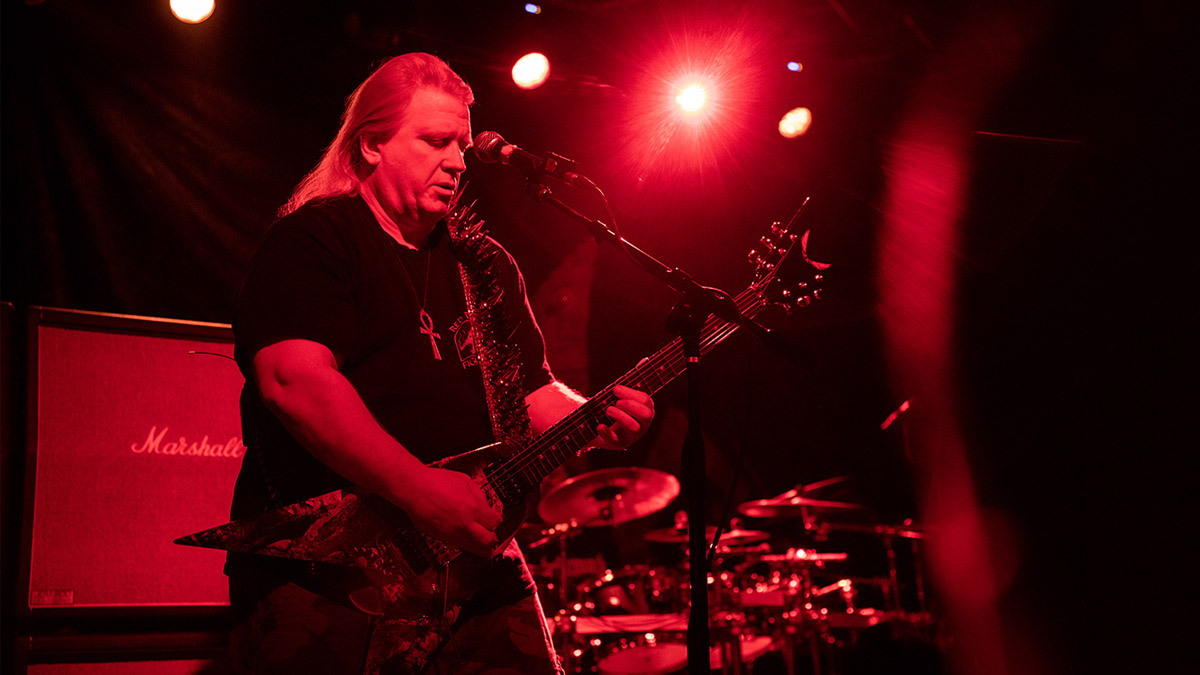
“Another one of the instruments on here is the Glissentar. It’s made by Godin – it’s an eleven-string fretless and they’re in pairs all except for the bottom note, which is like your drone note. It’s meant for guitar players to be able to easily play oud-like sounds.
“Then there’s my Dean 12-string, my Dean seven-string. There’s a Godin ACS Slim, which is a solid-body classical with a really skinny neck. The only electric guitar on this whole entire record was my Dean seven-string. And I think what got used was a Splawn head and Marshall cab.”
How did you originally become interested in Middle Eastern music, and eventually, combine it with heavy metal?
“The original drummer of Nile, Pete Hammoura, he and I go way back – like, a decade before Nile. His family is Lebanese, and one of the bass players that played with us for a while was also Lebanese.
“So, I ended up – just by hanging out with them – being exposed to a whole lot of Lebanese culture. And in particular, in a broader sense, Middle Eastern music of several varieties. You couldn't help but pick some of it up.
“One of the things we always said was when we were working on songs in the pre-Nile days was, ‘One day, let's do a project where we incorporate some of that and work it in with the metal. The two flavors would go together really, really well.’ So that’s kind of what happened with Nile.”
Do you have any pointers for guitarists who are interested in Middle Eastern music – as far as artists to check out and your preferred scales?
“I play the bağlama, so Orhan Gencebay – he's the king, the all-time champion. There is a Palestinian oud trio that I really, really like, called Le Trio Joubran. It’s three brothers and they all play oud. A fan had turned me on to it. They said, ‘These guys sound like Nile…but they're going it on the oud!’ Fabulous shit.
“As far as scales, on this record, there’s a whole lot of Phrygian modes, fifth modes, harmonic minor, the byzantine scale gets used a lot. But there’s synthetic scales, too – where notes are altered.
We're working on a new Nile record right now. So far, we’ve got 10 songs written. We’re probably going to do three more, and hopefully start recording by the end of the summer
“Like, one of the scales – this was in one of the Rusty Cooley lessons we did – it’s called the Nephren-Ka scale. And it’s called that because back when we did the Amongst the Catacombs of Nephren-Ka album twenty-something years ago with Nile, I had to find a scale that was going to work with some of the things I was writing… and none of them worked.
“So, the Nephren-Ka scale is a six tone scale but the notes are altered. It’s got the root, flat second, flat third, perfect fourth, flat fifth, and a flat seventh. But there’s also a lot of rootless scales on this record – where it’s almost a phantom mode. Where it’s a mode that’s related, but you're leaving out some of the notes.
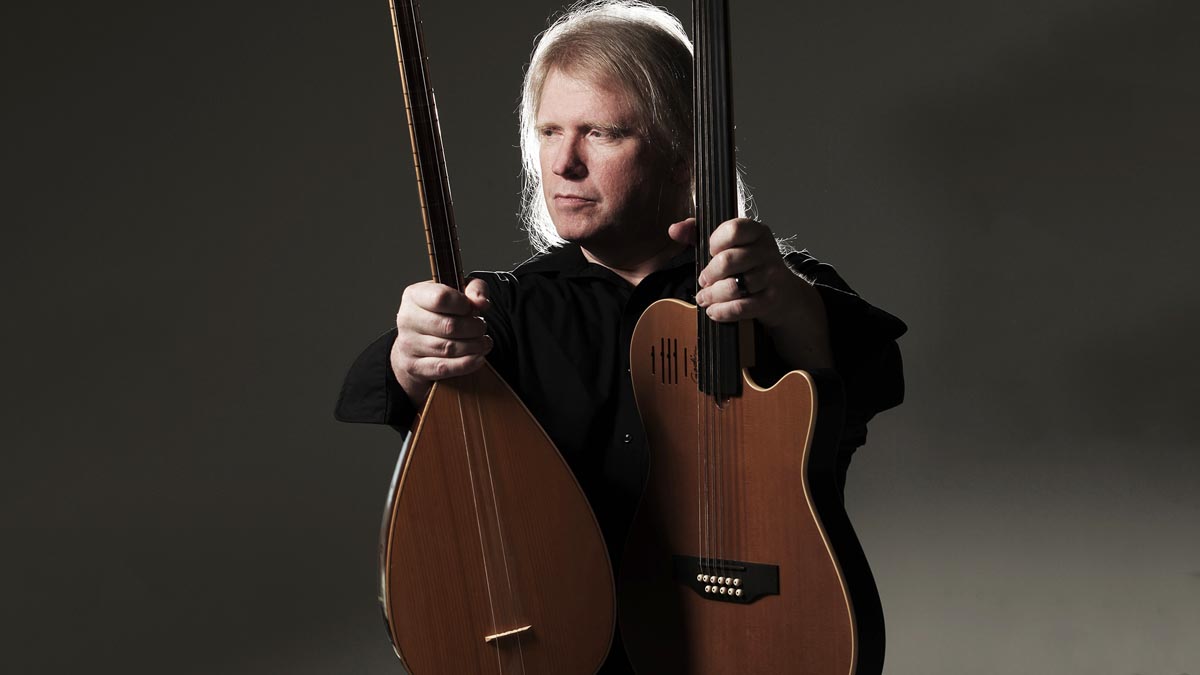
“With all the stacks of fourths and quartal-type chords, if you've got a four-way stack of fourths, it’s almost a pentatonic scale. But depending on what other note you add in – to I guess what makes a minor eleventh chord – will give you some really bizarre results, because it’s in between keys. It’s not necessarily the mode that you’re actually playing in. It can be a different one.
“But yeah, ‘phantom modes.’ Like, if someone's playing a C note, you play E minor pentatonic, it sort of makes a C major 7 tonality… but you don't play any C notes. It’s a phantom mode. But put it in a Phrygian type context with a very ancient kind of modality thing, those four way stacks really allow all these other possibilities.
“It's not quartal harmony – like McCoy Tyner – although, it kind of is. But it isn't, because we're in like, ‘super-Phrygian mode.’”
What are your future plans?
“We're working on a new Nile record right now. So far, we’ve got 10 songs written. We’re probably going to do three more, and hopefully start recording by the end of the summer.
“Then we've got a European tour coming up in November/December, and after that, we've got to finish the record and hopefully get it out sometime early next year.”
Nowadays, do you think it is more difficult to find unique and original approaches in heavy music?
“Certainly there is an amazing glut of so many new metal bands. But I don’t think that’s necessarily bad. I think in the last 10 years, we’ve seen an acceleration in the evolution of the art form – with people working really hard to bring in new ideas. So, I think yes and no.
“If you really want to, there's all kinds of things that you can bring into your music. Especially now, living in the digital age – we have access to so much guitar playing, it's mind-boggling.
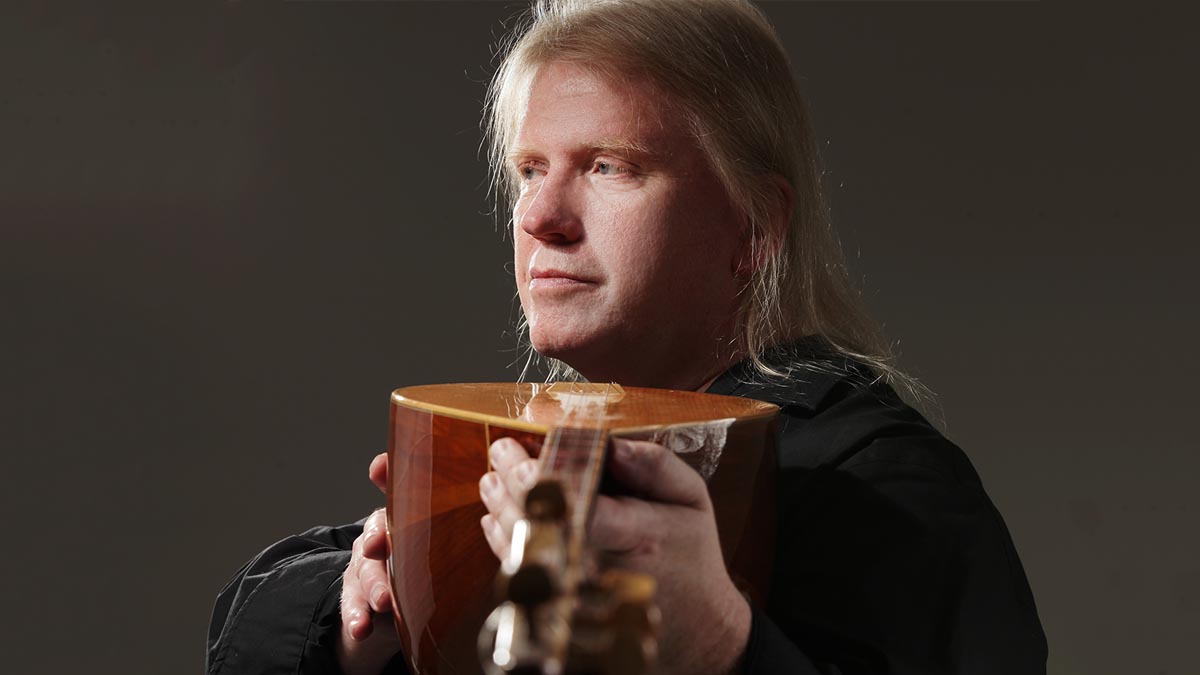
“When I started playing, we had no internet. But nowadays, if you want to see how Steve Vai did something, boom, type in ‘Steve Vai’ in your YouTube search, and you'll get 150 videos of Steve Vai, and you can see how he’s doing it. And that’s extremely powerful from a learning context – you’re not just hearing it, you’re seeing it.
“And it’s like that across the spectrum – for every single kind of music. If you’re a young player now, you can see how it’s done. And I think this has created an evolutionary up curve in the art form.
“People say, ‘It’s all shredding, blah, blah blah.’ No. There’s people doing stuff now that is mind-boggling, and we have access to all of it.
“So, is it harder to incorporate new stuff and do new things? Has it all been done? I don’t think so. I think we've just blown open the box now in these times, and anything is possible."
- Saurian Apocalypse is out now via Napalm.
Greg is a contributing writer at Guitar World. He has written for other outlets over the years, and has been lucky to interview some of his favorite all-time guitarists and bassists: Tony Iommi, Ace Frehley, Adrian Belew, Andy Summers, East Bay Ray, Billy Corgan, Alex Lifeson, Geddy Lee, Les Claypool, and Mike Watt, among others (and even took lessons from John Petrucci back in the summer of ’91!). He is the author of such books as Grunge Is Dead: The Oral History of Seattle Rock Music, Shredders: The Oral History of Speed Guitar (And More) and Touched by Magic: The Tommy Bolin Story.
“The Beyoncé effect is, in fact, real. I got a lot of traffic just from people checking the liner notes”: With three Grammy wins and plaudits from John Mayer, Justus West is one of modern session guitar’s MVPs – but it hasn’t been an easy ride
“You might laugh a little. The post office shipped your guitar to Jim Root”: This metal fan ordered a new guitar from Sweetwater – but it ended up with the Slipknot guitarist
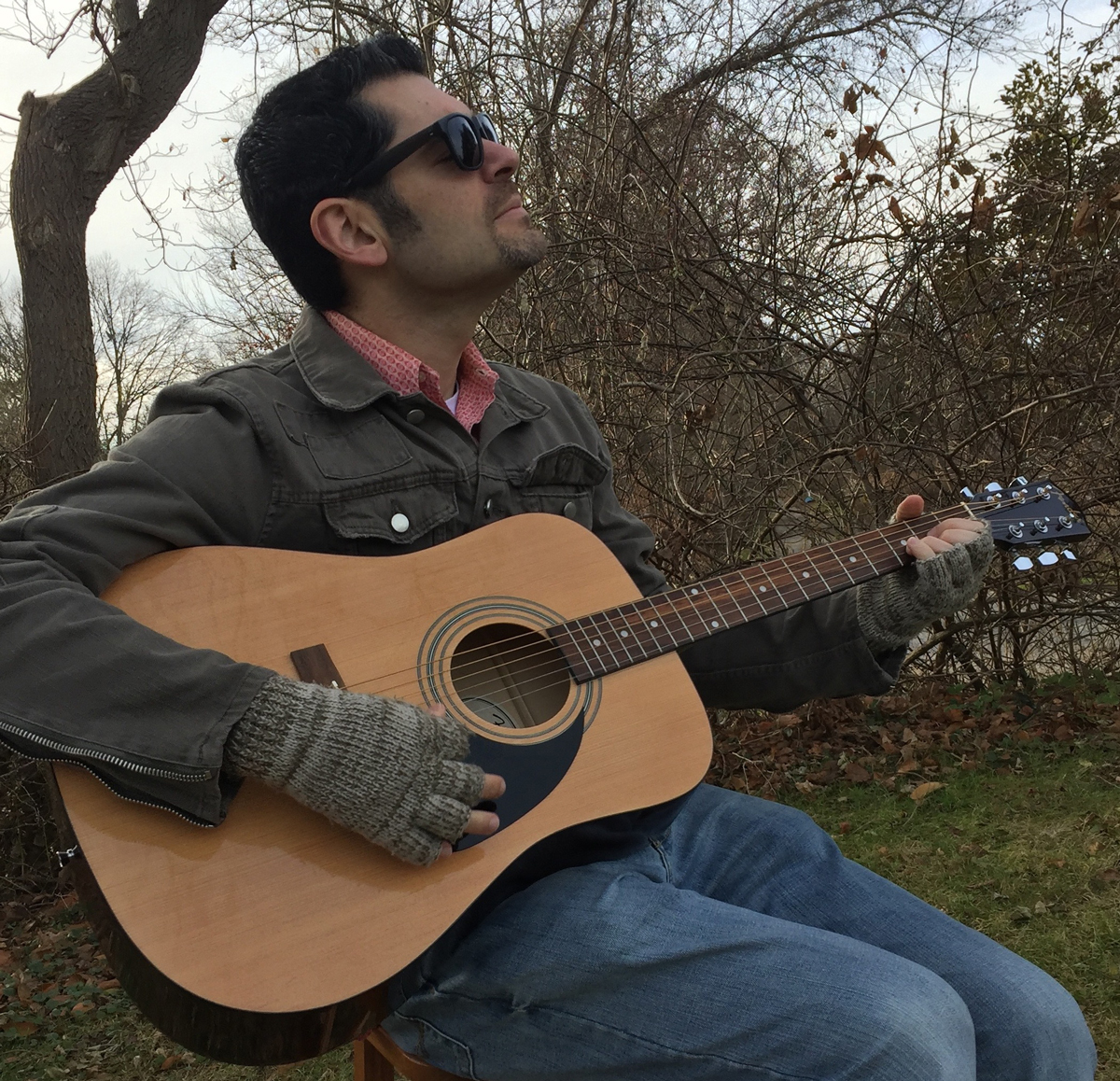



![John Mayer and Bob Weir [left] of Dead & Company photographed against a grey background. Mayer wears a blue overshirt and has his signature Silver Sky on his shoulder. Weir wears grey and a bolo tie.](https://cdn.mos.cms.futurecdn.net/C6niSAybzVCHoYcpJ8ZZgE.jpg)

![A black-and-white action shot of Sergeant Thunderhoof perform live: [from left] Mark Sayer, Dan Flitcroft, Jim Camp and Josh Gallop](https://cdn.mos.cms.futurecdn.net/am3UhJbsxAE239XRRZ8zC8.jpg)




